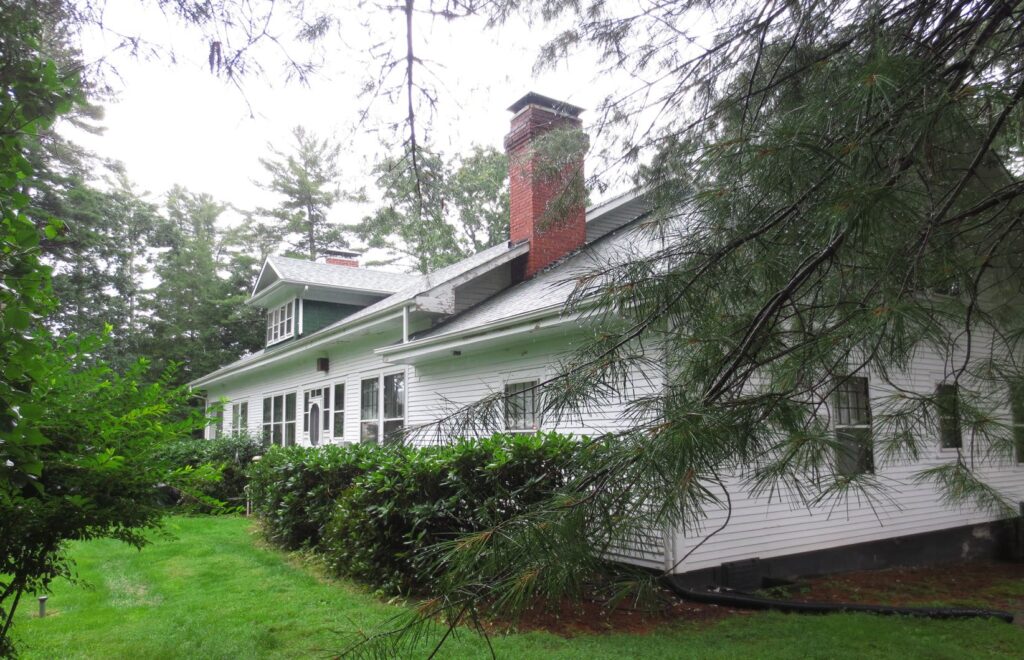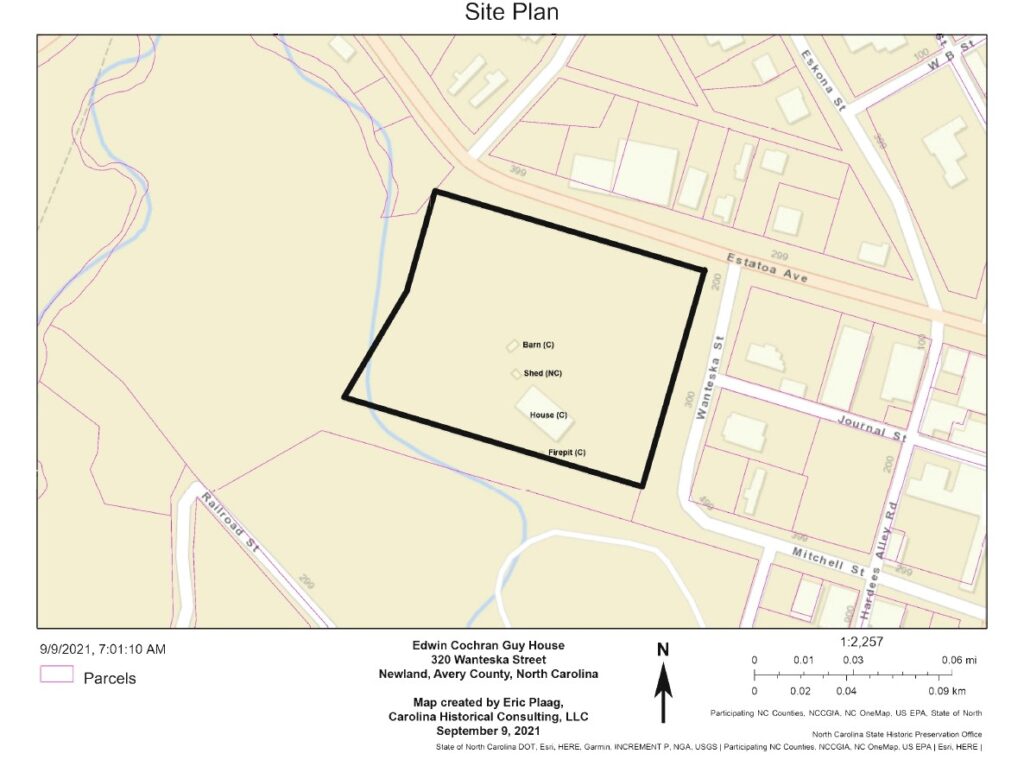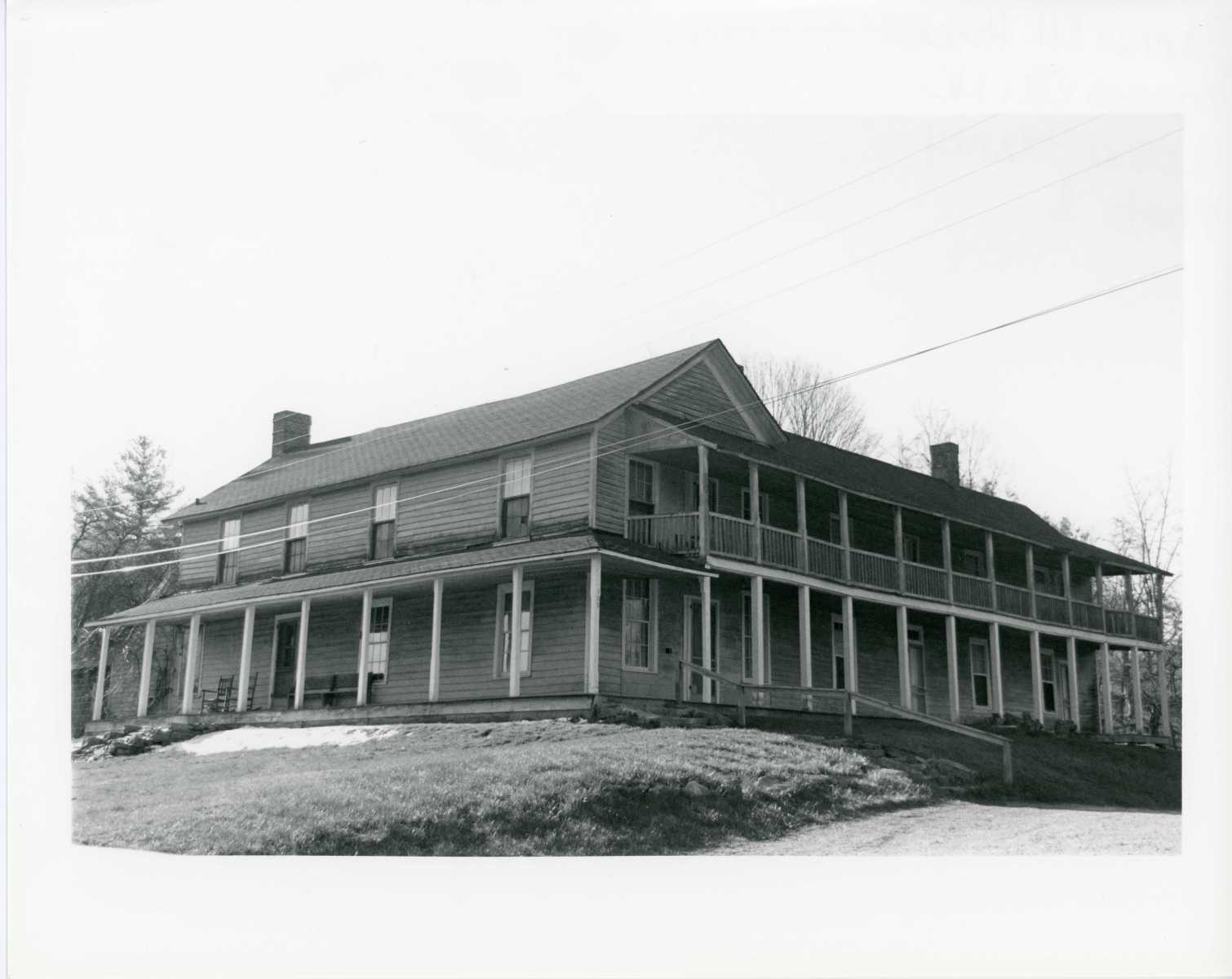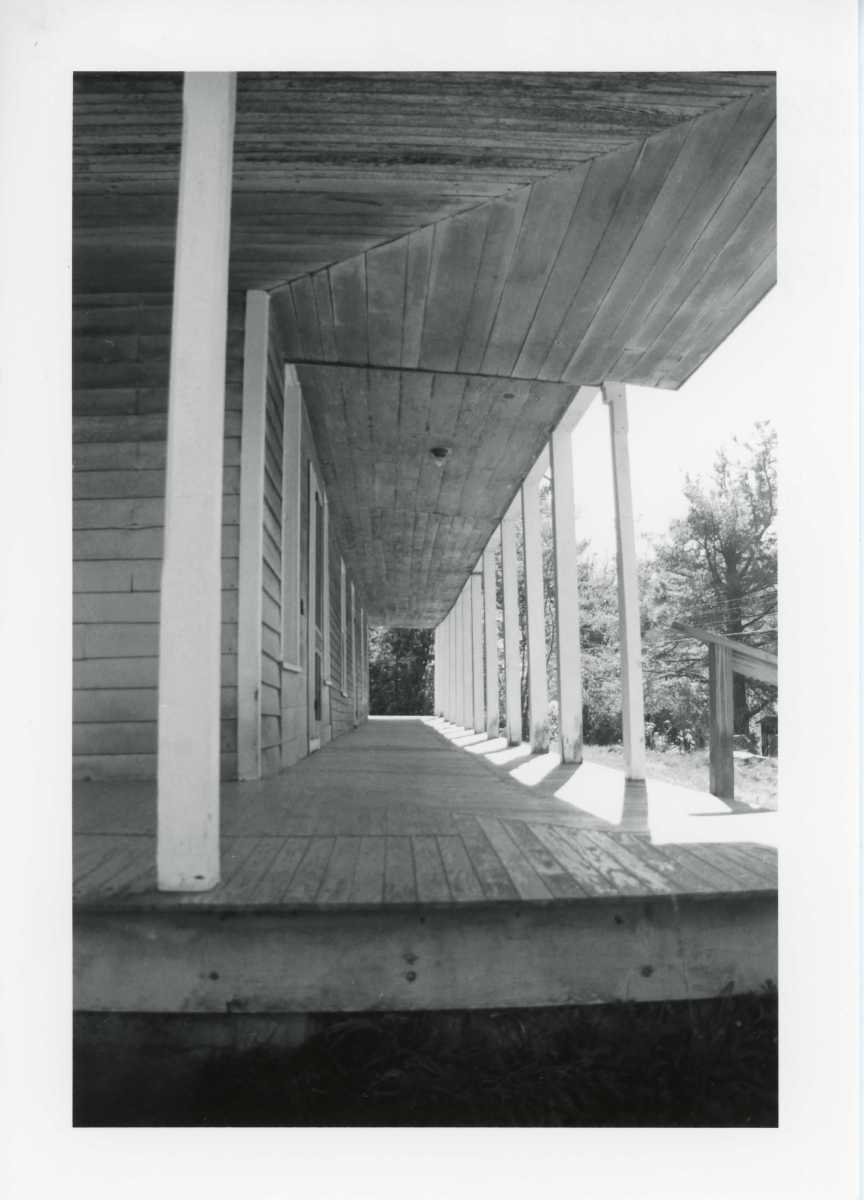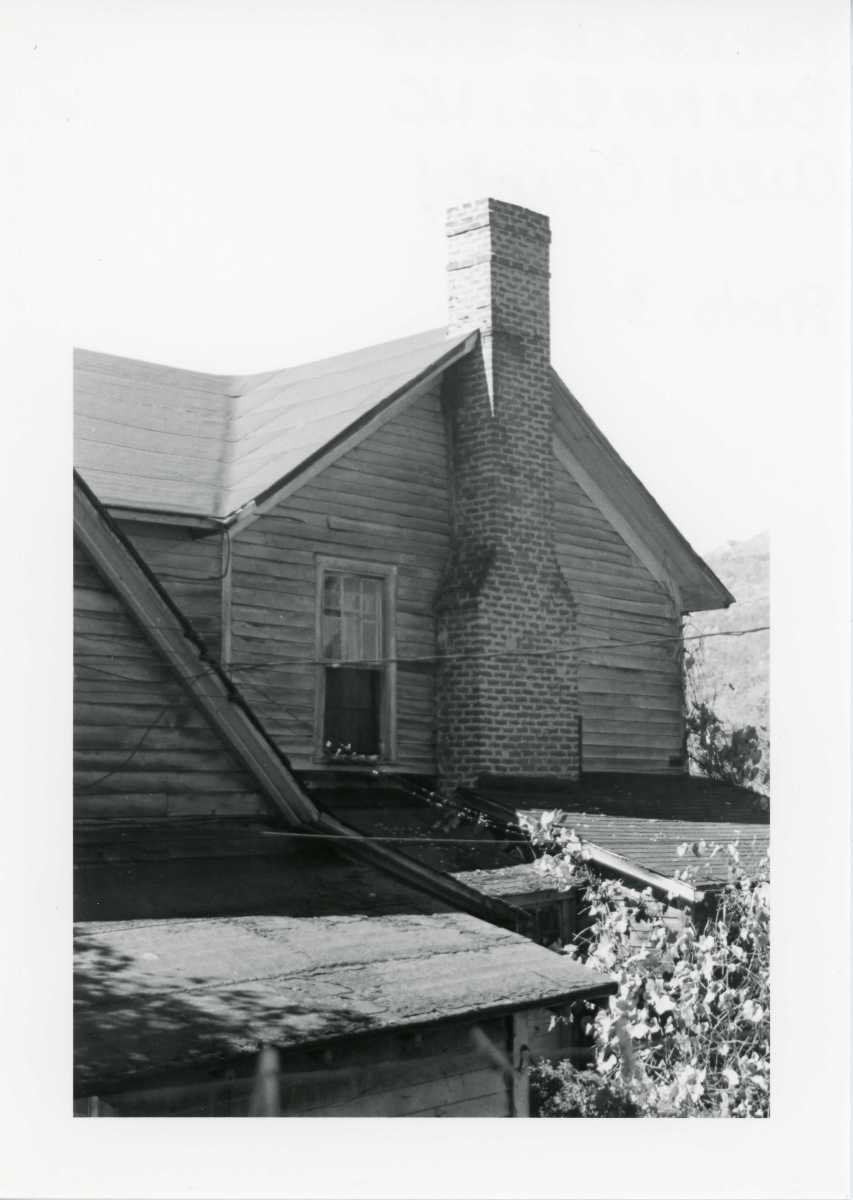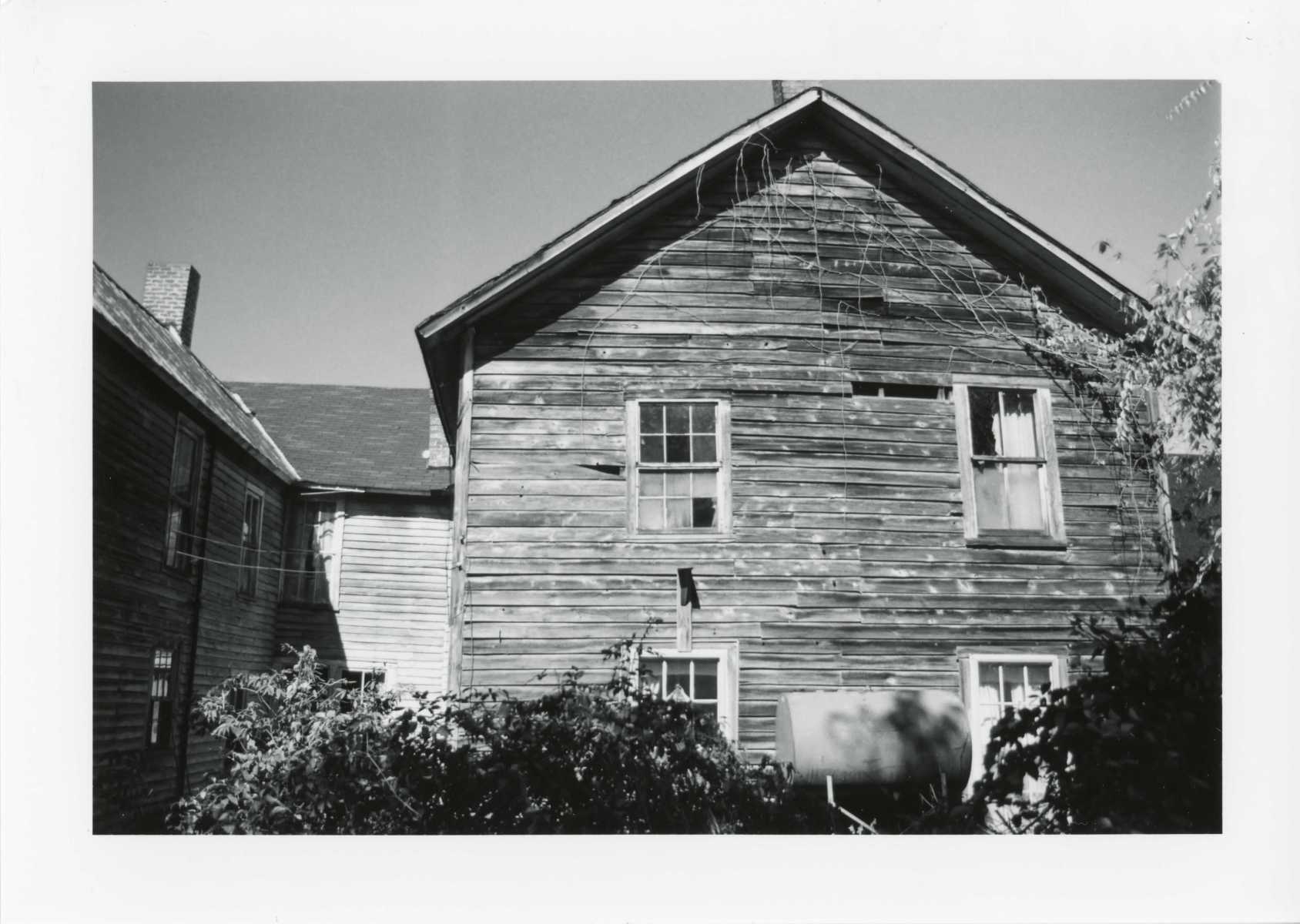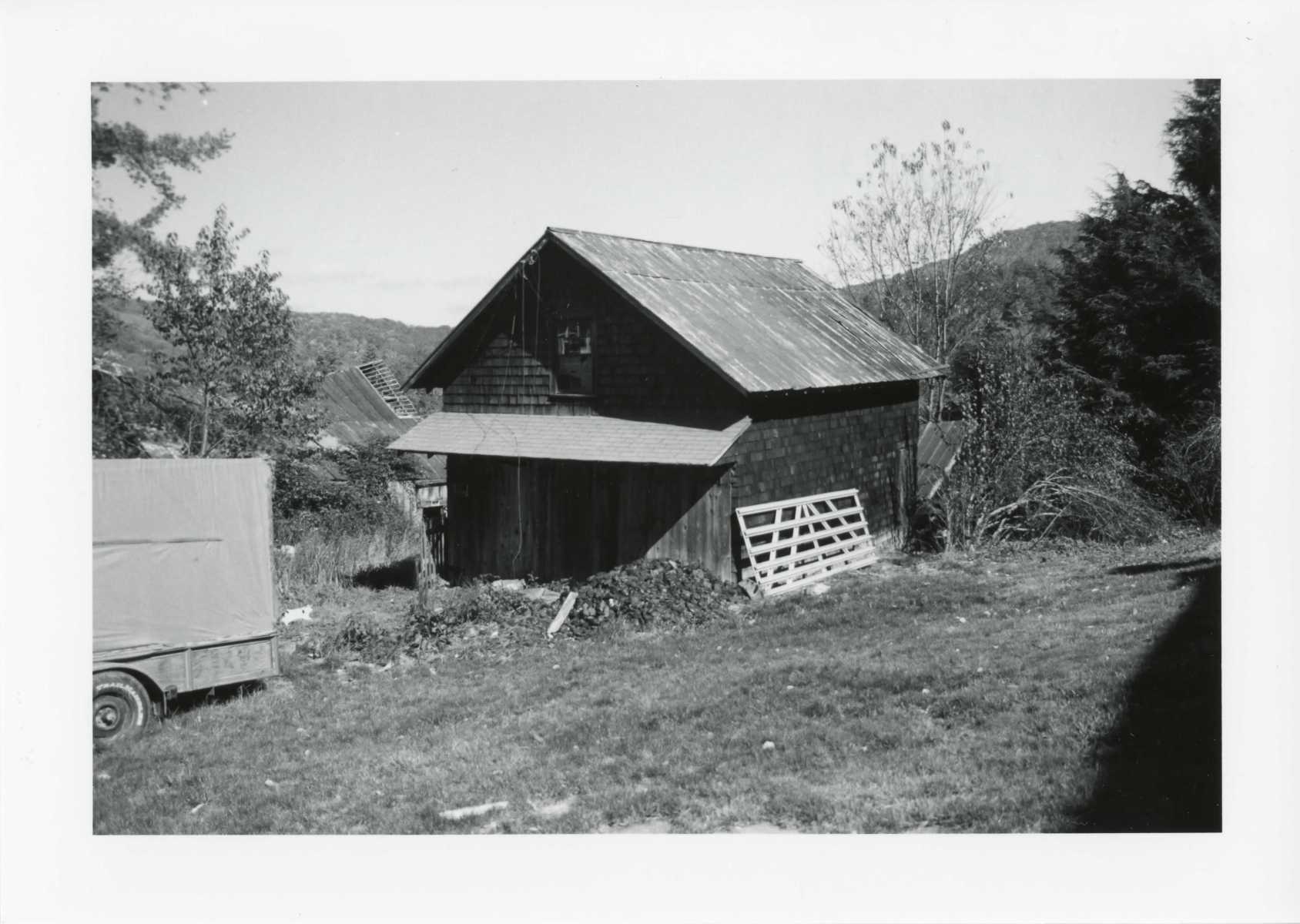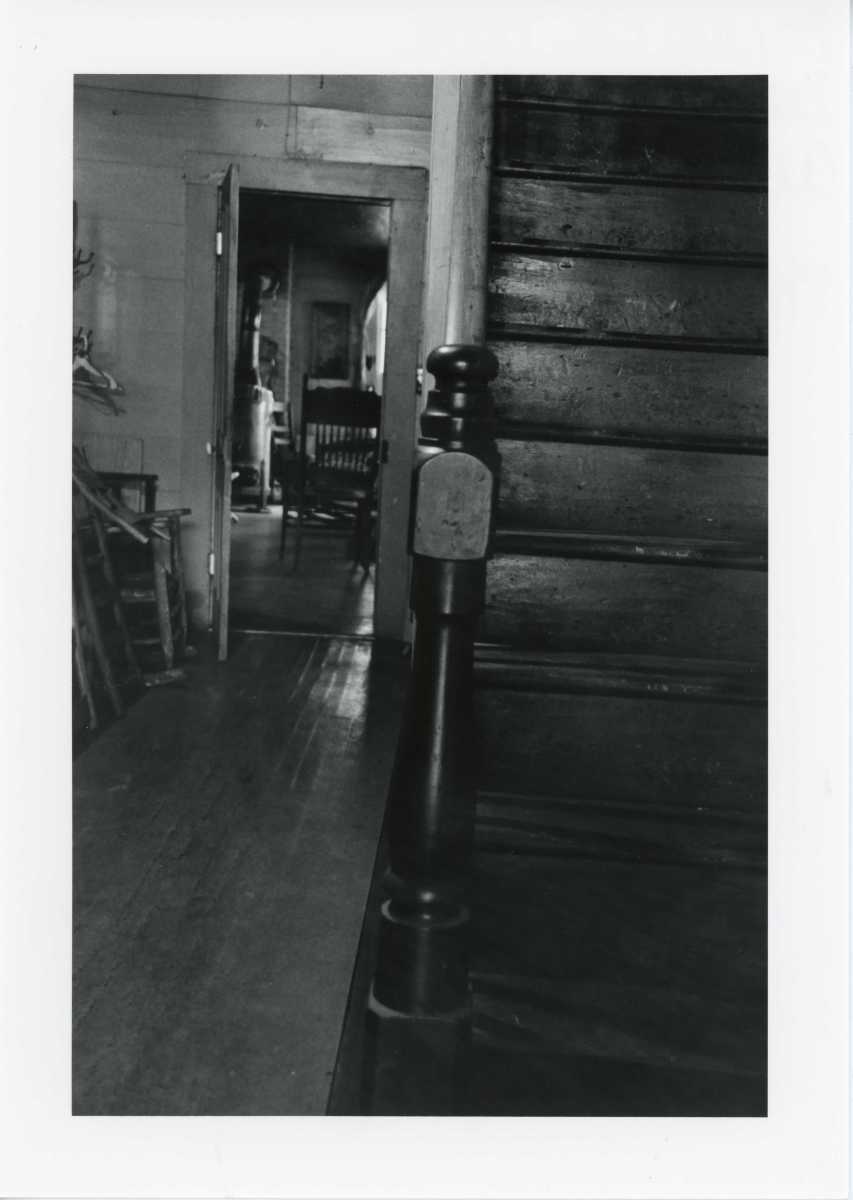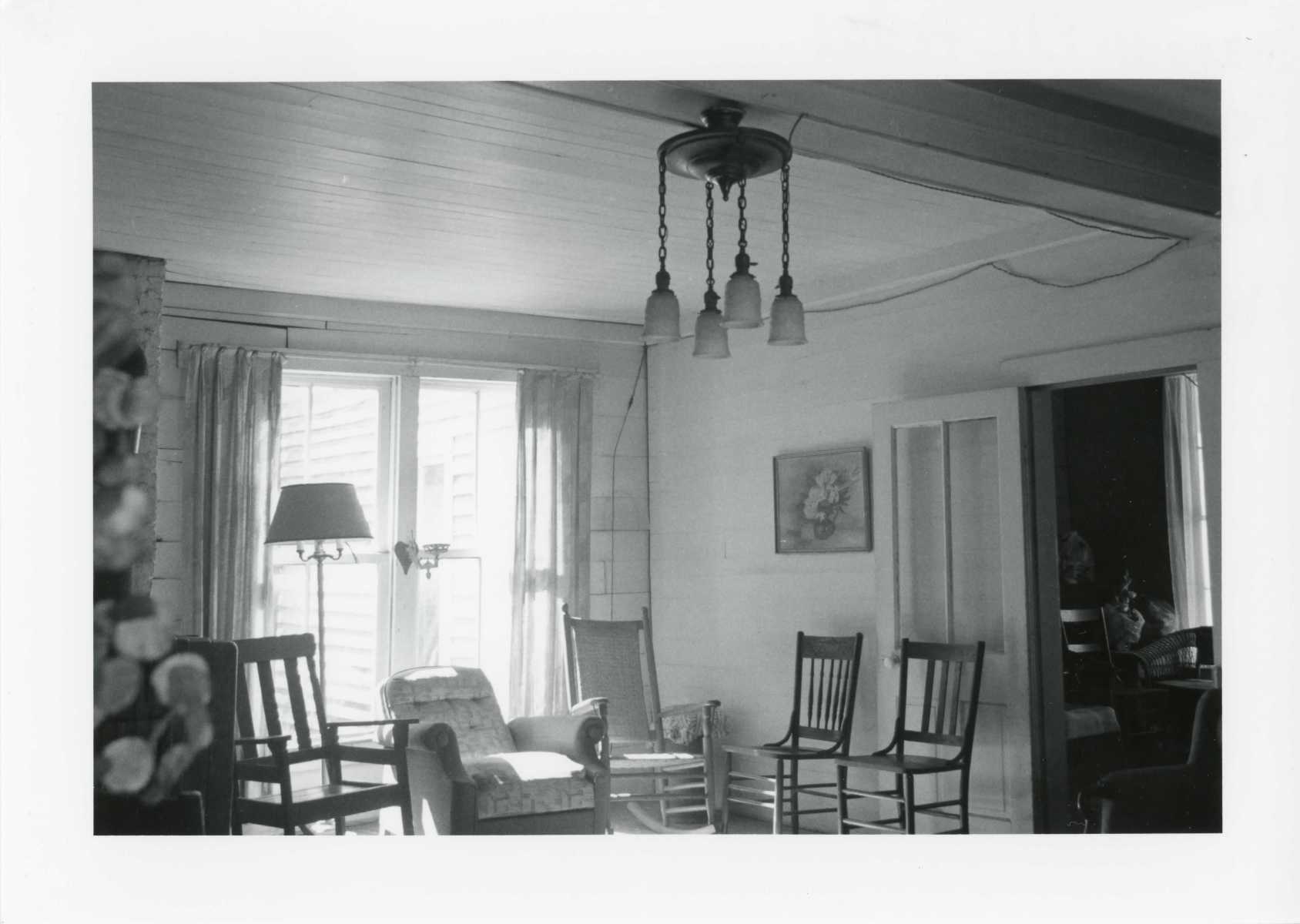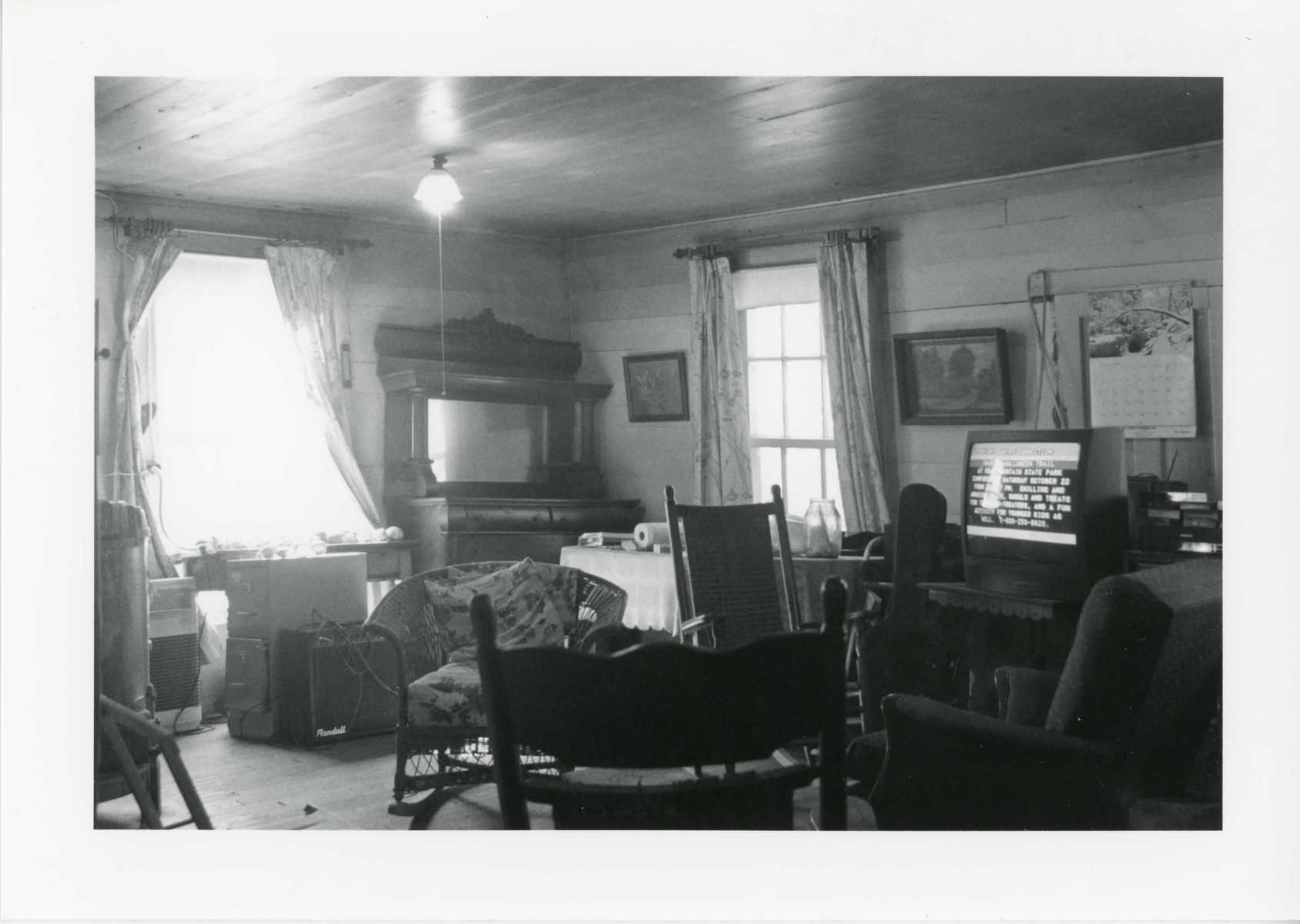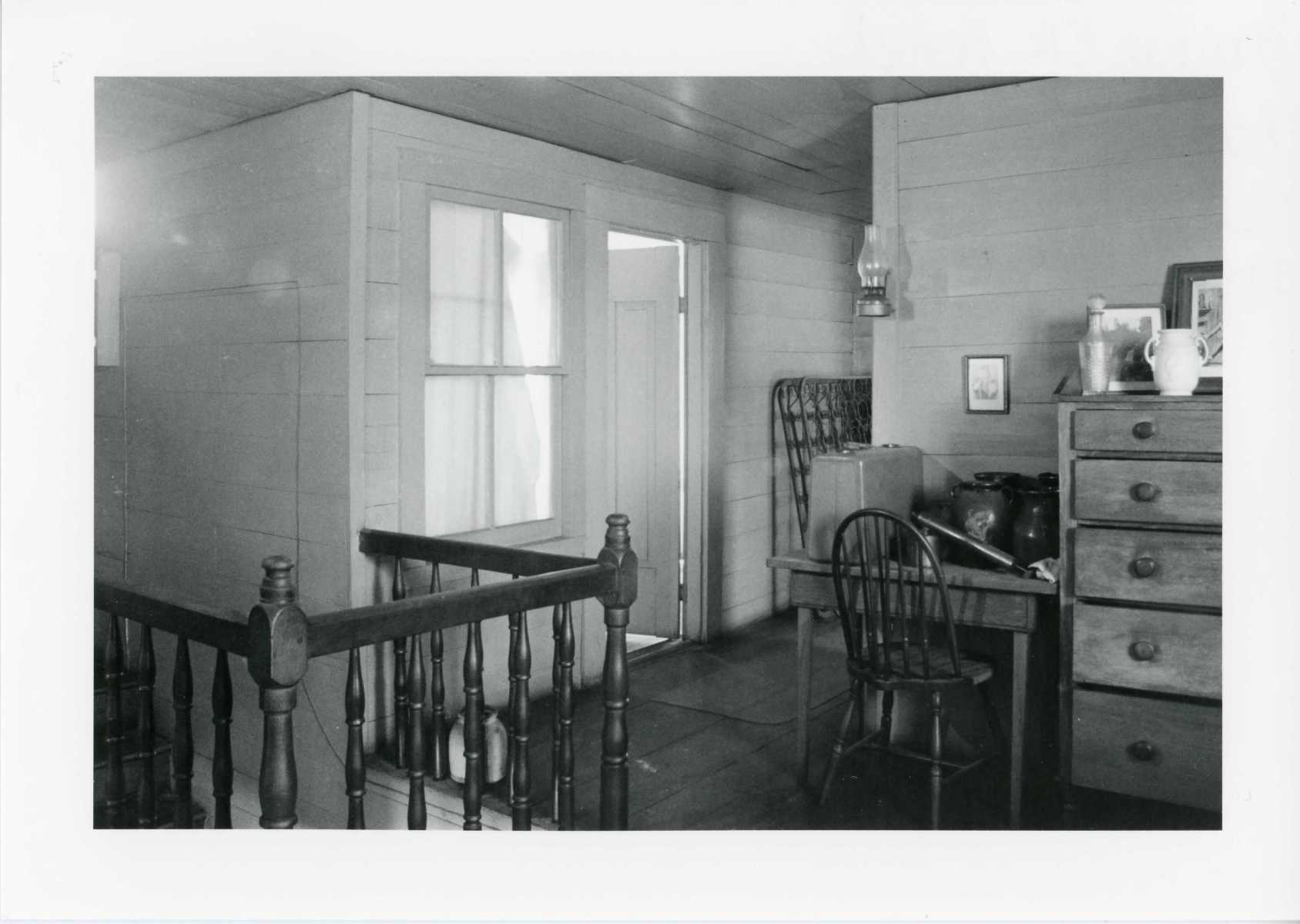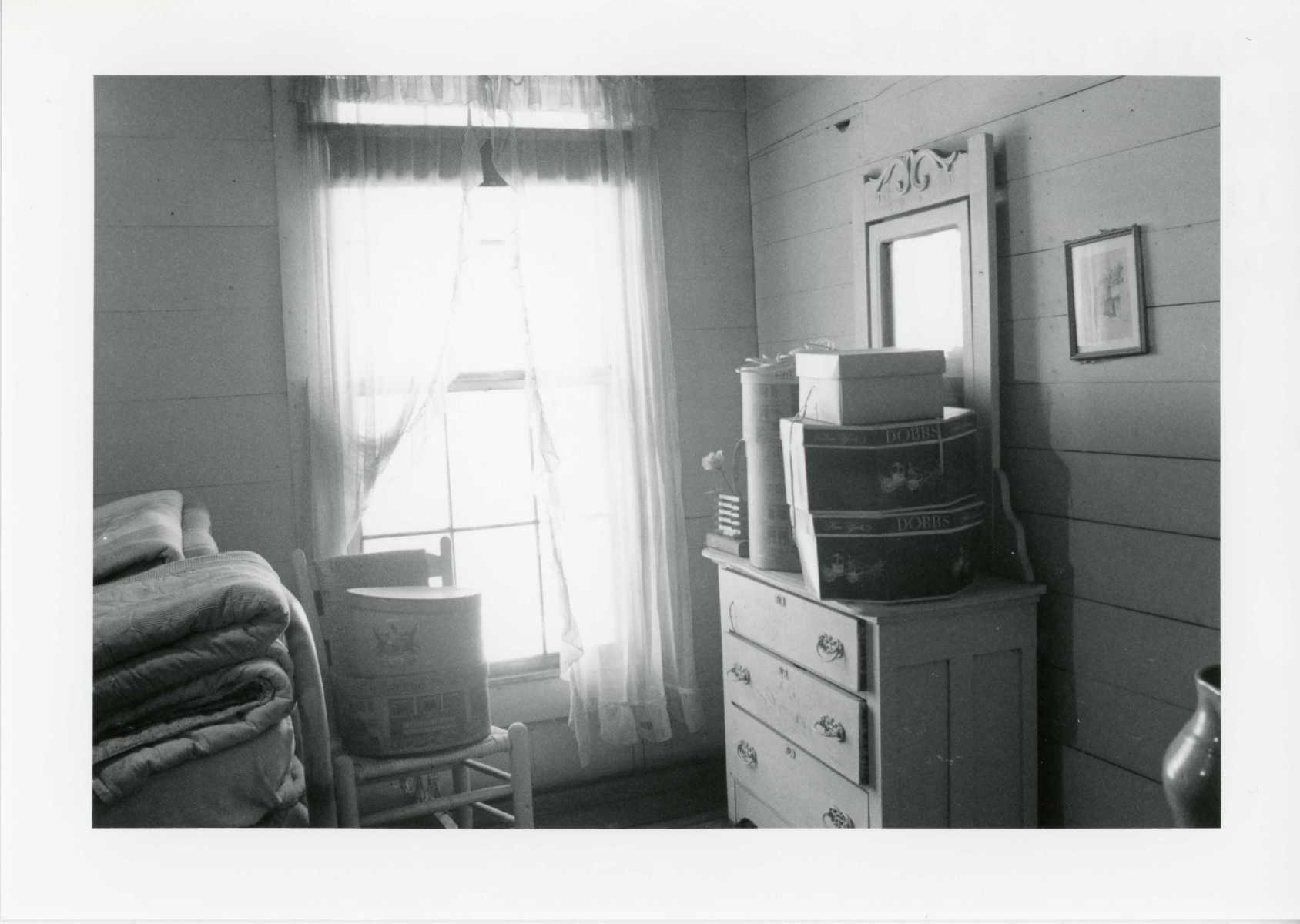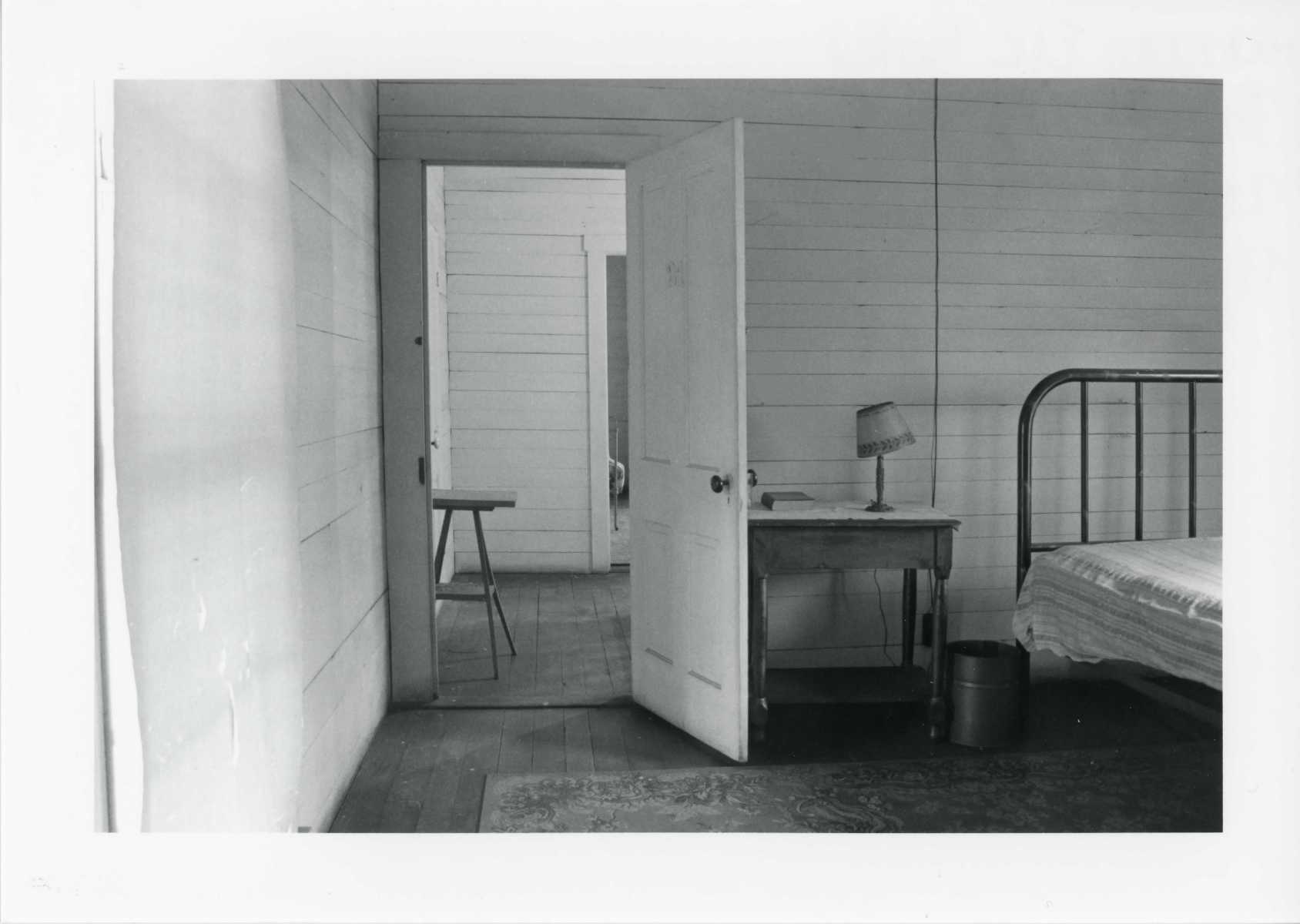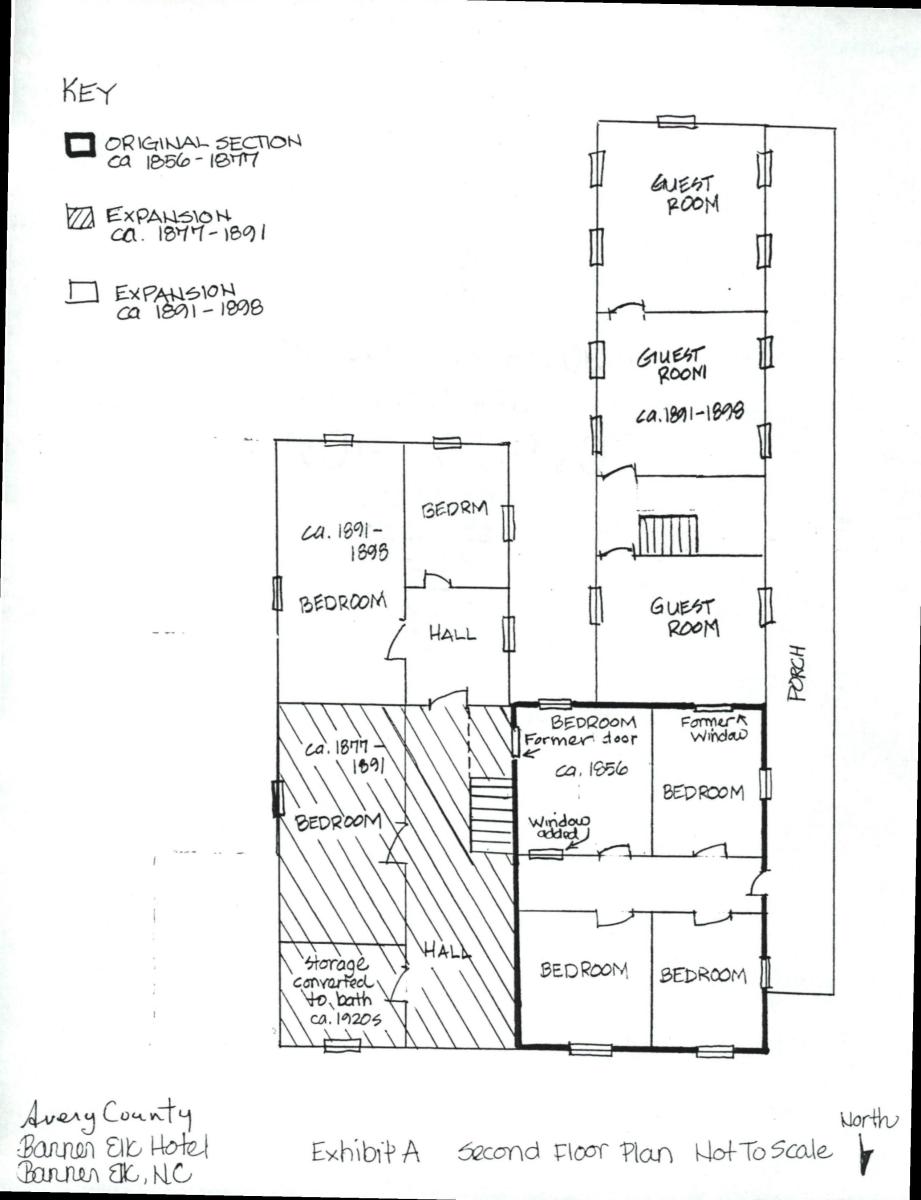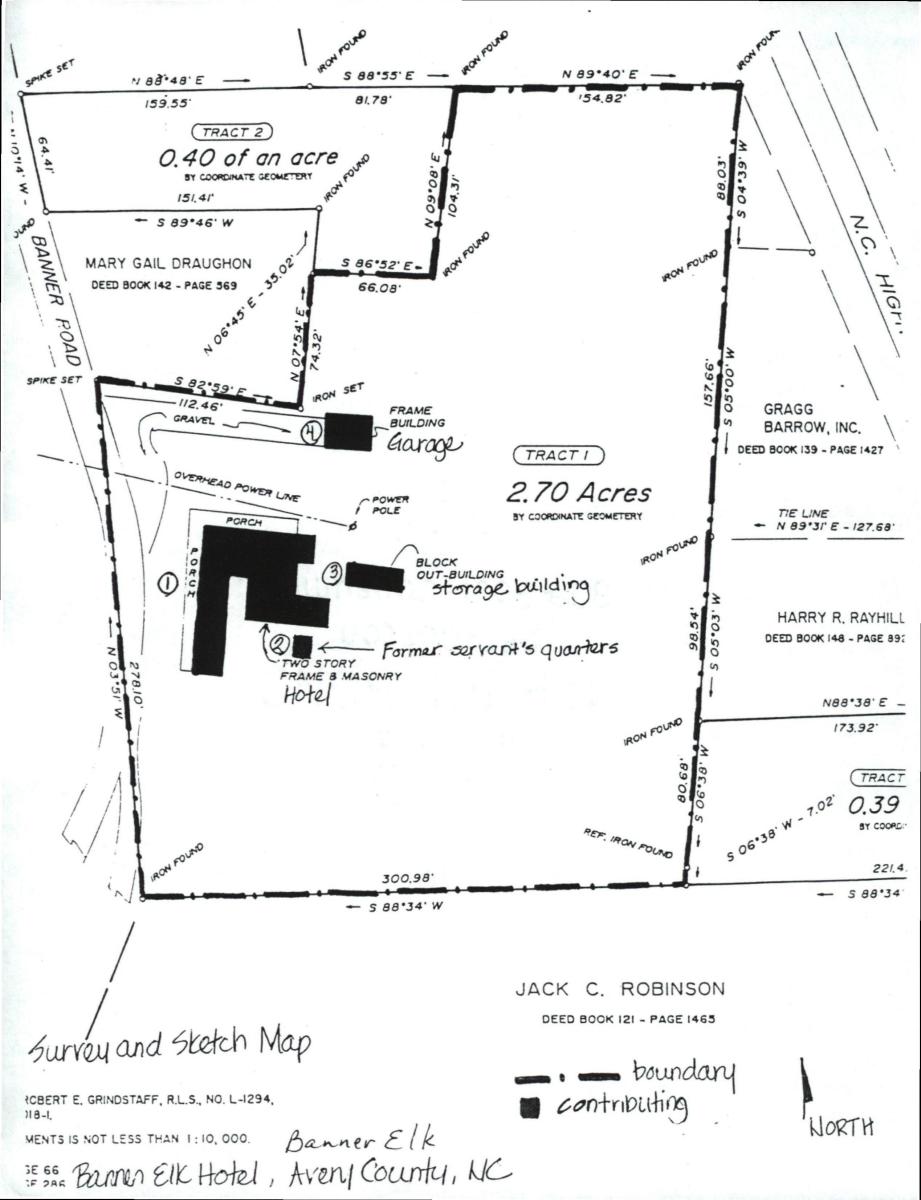Edwin Cochran Guy House
History
The Edwin Cochran Guy House is located in downtown Newland, Avery County, North Carolina, on the west side of Wanteska Street between Estatoa and Mitchell Streets in a residential area to the west of downtown Newland. It sits atop a low hill on a wooded, gently sloping, 3.63-acre parcel that retains its original dimensions from Guy’s purchase of the lot on March 1, 1915. Likely built in 1916, the Edwin Cochran Guy House is the best and most refined example of Craftsman-style architecture in Newland, North Carolina, as well as an outstanding example within Avery County. The Edwin Cochran Guy House property consists of two contributing buildings (the house and the barn), one non-contributing building (the shed), and one contributing object (the outdoor fireplace).
Family tradition holds that the front (east) two-thirds of the Edwin Cochran Guy House were built circa 1916 by a local contractor named John ‘Johnny’ Greene, but the source of the design is actually in some dispute. The rear third of the house was likely completed as part of substantial renovations conducted certainly before 1944 and probably in the mid-1930s, which resulted in the removal of the original hipped roof of the rear elevation and the extension of a rear gable over the addition. These renovations occurred after Guy’s second marriage, after which the house was frequently showcased in the region’s society pages under the name “Oakland Heights.”
Edwin Cochran Gray was a Newland banker who was also engaged in mining, timber, and railway ventures throughout Avery County. In addition to his role as cashier, and later president and chairman of the board of directors, of the Avery County Bank, Guy’s influence on the commercial development of Newland in the first half of the twentieth century is unrivaled. Guy also played a critical role in the development of and infrastructure planning for the community of Newland. Guy is credited with creating Newland’s first waterworks system and its first power company chartered as the Newland Light and Power Company in 1920. Guy also played a role in extending power lines from Newland to Montezuma and Linville, providing electricity to those communities for the first time as well.
Guy was a 26-year-old bank clerk and cashier in Marion, North Carolina for the Mitchell County Bank in Bakersville during the time of the creation of Avery County.
Born as one in a pair of twin brothers in Staunton, Virginia, on October 17, 1884, Edwin Cochran Guy was the child of James Emmett Guy and Martha (Wright) Guy. James Emmett Guy had started his career as an attorney but later shifted to the teaching profession. In 1897, when Edwin was twelve, James Guy moved his family to Marion, North Carolina, where James accept a position as principal with the Marion Academy. Edwin Cochran Guy’s formal education, until about age 16, took place at the Marion Academy, after which he took his first job with a bank in Marion—probably the First National Bank, with which he was listed as an assistant cashier in 1906. By 1908, Guy had accepted a position with Mitchell County Bank in Bakersville, a job he retained through at least 1910. During this same period, he showed his first interest in mica mining as a speculative investment. By 1911, Guy was also diversifying his leadership roles and likely his investments, appearing from 1911 to 1912 as the officer of record for the Blue Ridge Furniture Company in Marion, North Carolina.
About this same time, Guy apparently accepted a position with a Waynesville bank, where he soon met Mary Bruce Landis (1890-1932). The couple married somewhat suddenly in July 1912. Shortly thereafter, the newlyweds relocated from Marion to Hendersonville, where Edwin Guy took a position with the Wanteska Trust Company. The following year, Wanteska Trust and the First National Bank, the two oldest banks in Hendersonville, merged, and Guy continued in his job as an assistant cashier with the First Bank and Trust Company, while also joining three other investors from his bank to purchase the Clarke Hardware Company building in town. While living at Hendersonville, Guy also expressed interest as a baseball enthusiast, signing on with the Hendersonville Baseball Club. Guy also broadened his social connections, joining the Colonial Club of Hendersonville and serving as secretary for a group described as “one of the most fashionable clubs in North Carolina.”
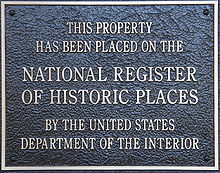
Edwin Cochran Guy House
| Header | Data |
|---|---|
| NRHP ID | 100007245 |
| Architectural Classification | Bungalow Craftsman |
| Date Added | Dec 10, 2021 |
| Property | |
| Foundation | Brick, Concrete |
| Walls | Weatherboard |
| Roof | Asphalt Shingles |
| Chimneys | Brick |
| Porches | Wood |
| Significance | Wheeler & Runge |
| Builder | John Greene |
| Significance | 1916 – 1955 |
By the summer of 1913, Guy clearly saw opportunities at Newland as the rapidly developing county seat began to take shape, and it’s likely that the Guy family relocated to Newland around this time, initially taking up residence in the Jesse Hotel before moving to an apartment above the Avery County Bank. In July 1913, the Avery Vim reported that 30 families and close to 200 individuals were residing in the Newland vicinity, with the new bank building with a built-in vault under construction. The same article reported that the bank had sold capital stock amounting to $25,000, and that “E. C. Guy was expected over Monday to begin to get things open for business.” The bank was not officially chartered until August 1913, however, and E. C. Guy was listed as the cashier, with a new opening date of “the end of the [September].” Following several years as a cashier at the Avery County Bank, Guy was eventually named president and chairman of the board of the bank, which was the principal lending authority for Newland and Avery County property owners for decades. Guy served in those roles until his death in 1955.
While there were other community and business leaders in Newland during its early days, no other figure had the transformative and lasting effect on Newland’s and Avery County’s commerce and community development in the numerous ways that Edwin Cochran Guy did. The Hughes brothers, for example, included mercantilist Claude, funeral home director Ronald, druggist Ralph, and attorney Charlie; they built several of Newland’s early businesses, but none individually rivaled Guy’s influence—as the sole, loan-brokering cashier at the Town’s only bank during Newland’s first few decades—on townsfolk seeking to build homes and businesses for themselves during Avery County’s emergence as a commercial and residential center.43 Even political leaders failed to rival Guy’s influence. Robert W. Wall, Newland’s first mayor, appears to have been little more than a town facilitator for the initiatives dreamed up by Guy. Historian Horton Cooper has perhaps best described the towering importance of Guy during the formative years of both Newland and Avery County:
"Guy was not only an astute businessman of keen vision, but he was also gifted in understanding the economic needs of this area and an ability for directing his efforts toward the best practices for accomplishing the development of the resources of the new county. Frank, direct, poised, and friendly, he won the confidence of the people and retained it throughout his life. The bank prospered from its beginning and throughout its years of existence has been the greatest factor in raising and maintaining the progressing economy of the major population of Avery County.”
Resources Associated with Edwin Cochran Guy
Notable People
- Guy, Edwin Cochran
Geography & Location
Edwin Cochran Guy House
320 Wanteska Street
Newland, NC 28657

